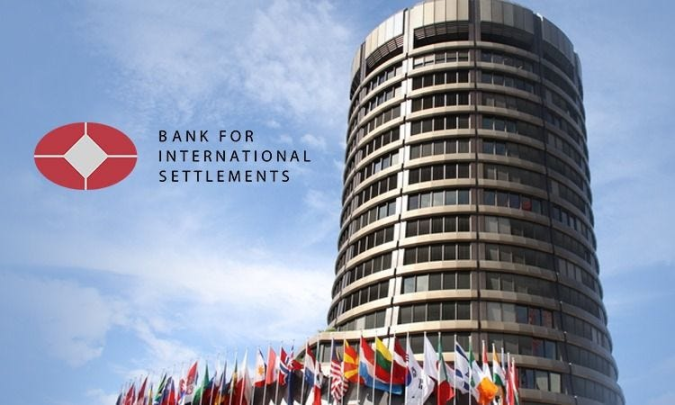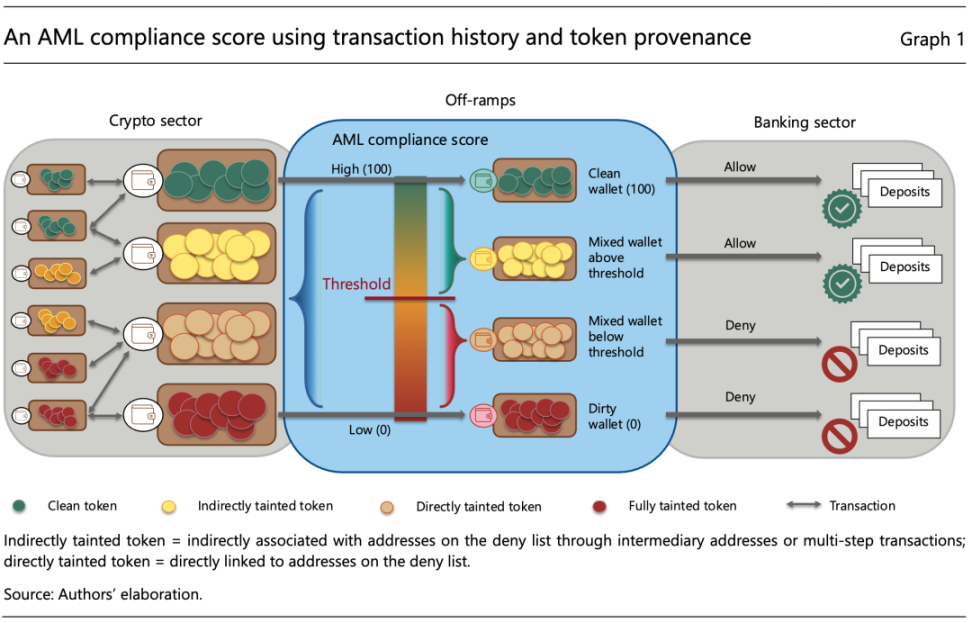Written by: BlockSec
When the "Central Bank of Central Banks" Speaks on Crypto Regulation
When the Bank for International Settlements (BIS) speaks, the global financial community listens.
As the oldest international financial institution in the world, the BIS was established in 1930 and has 63 member central banks, representing countries that account for about 95% of the global GDP. The BIS has also played the role of the "central bank of central banks":
"The BIS's mission is to serve central banks in their pursuit of monetary and financial stability, to foster international cooperation in those areas and to act as a bank for central banks."
— Bank for International Settlements
The BIS serves as a collaborative platform for central banks and a research and rule-making center for global financial stability. Therefore, its research and publications often become important references for regulatory policies in various countries.

In August of this year, the BIS published "An approach to anti-money laundering compliance for cryptoassets" in BIS Bulletins No.111[1]. The timing of this paper's release is quite delicate—right as global crypto regulation enters a critical turning point, with regulatory agencies in various countries seeking a balance that effectively mitigates risks without overly hindering innovation.
This article will help you interpret this report and, in conjunction with the FATF's annual assessment: the unveiling of the global crypto regulatory report card, objectively evaluate the current state and future direction of crypto regulation.
BIS Research and Publications: Why Its Voice Matters
In the financial governance system, BIS research and publications often guide global regulatory trends, maintaining a leading position in emerging fields.
Its research department not only focuses on monetary policy and financial stability but also continuously explores new areas, including crypto assets, AI explainability, and climate risk. This ancient institution located in Basel, Switzerland, maintains close collaboration with global central bank researchers and academia, continuously providing scientific and objective policy recommendations to global regulatory agencies.
Especially in the cryptocurrency field, the BIS has demonstrated forward-thinking leadership: from the cross-border crypto asset flow study published in 2025[2] (covering seven years of data from 184 countries) to systematic analyses of stablecoins, DeFi, and CBDCs, providing important references for regulatory frameworks.
At the same time, BIS's short thematic research Bulletins are highly policy-oriented due to their focus on hot topics and direct engagement with policy issues. For example:
- 2021 DeFi risk study: cited by multiple central banks as a reference for regulatory frameworks[3]
- 2023 crypto ecosystem report: systematically elaborated on the structural flaws of crypto[4]
The recent paper on crypto AML is published in this series (No.111), highlighting the BIS's emphasis on this topic.
BlockSec Interpretation: What is BIS's New Compliance Approach?
In this August thematic study—"An approach to anti-money laundering compliance for cryptoassets"—the BIS confronted a reality: the traditional financial AML/KYC system faces systemic challenges in the crypto world. However, the BIS did not stop at "helplessness" but proposed an innovative "compliance scoring system."
BlockSec Guide
This thematic study from the BIS signifies a fundamental shift in the focus of compliance:
- Old model: "Who are you?" (Identity-oriented)
- New model: "Where does your money come from?" (Behavior-oriented)
Paradigm Shift: From "Identity Verification" to "Source of Funds"
Traditional AML relies on customer identity information (KYC) from intermediaries like banks, but in a decentralized chain, users can completely bypass intermediaries through self-custody wallets. The BIS's main argument is that every transaction on-chain has a traceable source (provenance), which is the new AML leverage.
Core Idea: AML Compliance Scoring System
The most important innovation proposed by the BIS is the establishment of an AML Compliance Score mechanism:
Scoring principles:
- High score (up to 100 points): primarily from "allow list" wallets with relatively clean funds
- Low score (down to 0 points): associated with "deny list" known illegal wallets with tainted funds
- Dynamic updates: continuously adjusted based on real-time transaction history and risk intelligence
Technical implementation differences:
- Stablecoins (account model): while specific tokens cannot be tracked, the transaction network of wallet addresses can be mapped
- Bitcoin (UTXO model): the complete history of each satoshi can be traced back to the mining source

Source: An approach to anti-money laundering compliance for cryptoassets
Three levels of implementation intensity:
- Strict mode (Allow List): only accepts tokens from addresses that have passed KYC checks, similar to traditional banks' strict identity verification
- Moderate mode (Multiple Criteria): combines various standards (holding time, transaction frequency, counterparty history, etc.) for comprehensive assessment
- Lenient mode (Deny List): only rejects tokens from known illegal addresses, allowing users maximum trading freedom
Redistribution of Responsibility: From Centralized to Layered
The BIS distinguishes different levels of responsibility:
- Centralized hubs (fiat deposit/withdrawal points, stablecoin issuers, exchanges): bear the strictest AML/KYC responsibilities.
- On-chain activities (DeFi protocols, P2P transfers): rely more on risk monitoring, on-chain traceability, and behavioral profiling.
This design acknowledges the practical limitations of the decentralized world while maintaining regulatory control at critical points, avoiding a "one-size-fits-all" approach.
Moreover, the BIS proposed a rather controversial concept: the Duty of Care. This means that users also have a responsibility to check the compliance score of their counterparties before transactions. While this presents significant practical challenges, it reflects the BIS's vision of building a compliance ecosystem with universal participation.
Current Regulatory Dilemma: Challenges of the Travel Rule and Evolution of Crime
Although the BIS's new ideas are theoretically elegant, to understand their context, we must first examine the severe realities facing the current regulatory system. Currently, global crypto regulation primarily relies on the Travel Rule, which requires VASPs to collect and transmit the identity information of senders and receivers when processing transactions above a certain amount. However, this much-anticipated regulatory standard is facing significant challenges.
Current Status of Travel Rule Implementation: A Huge Gap Between Ideal and Reality
According to the FATF's latest annual assessment report released in June this year, the global implementation of the Travel Rule has been disappointing. Among the 138 jurisdictions assessed, only one country (the Bahamas) was rated fully compliant, 29% of jurisdictions were deemed largely compliant, 49% partially compliant, and 21% were still non-compliant. This data shows almost no improvement compared to 2024, exposing the systemic failure of traditional regulatory tools in the crypto world.
Moreover, even in the 73% of jurisdictions that have "legislated" the Travel Rule, the execution results vary widely. The significant discrepancies in threshold standards among countries have become the biggest obstacle: the United States insists on a $3,000 threshold established in 1996[5], while the European Union will implement a zero-threshold policy starting in December 2024[6] (even a €0.01 transfer requires the Travel Rule). This result of disparate regulations means that a cross-border transaction may be "compliant" in the sending country but deemed "non-compliant" in the receiving country, leading to the transaction being unable to be completed.
Technical Failures of the Travel Rule
The fundamental reason for the failure of the Travel Rule lies in the inherent conflict between its design assumptions and the realities of blockchain technology. The rule is designed based on the intermediary model of traditional finance, but in a decentralized environment: for self-custody wallet users, they can completely bypass VASPs, making it impossible to track and verify their off-chain identity information; for DeFi protocols, there are no traditional intermediaries to enforce identity verification requirements; and for cross-chain transactions, which involve multiple blockchain ecosystems, regulatory boundaries remain blurred.
It is this systemic failure at the technical level that provides greater operational space for criminal activities.
Evolution of Crime: A Direct Consequence of Regulatory Failure
The difficulties in implementing the Travel Rule have directly led to the rapid evolution and upgrading of criminal methods. Criminals have not been effectively restrained by this regulatory tool; instead, they have found more covert ways to commit crimes:
Stablecoins become the new favorite:
In the context of the massive explosion of stablecoins, due to technical execution loopholes in the Travel Rule, stablecoins have replaced Bitcoin as the preferred tool for criminals. Most on-chain illegal activities now involve stablecoin transactions, as they find it easier to evade existing regulatory checks through stablecoins.
Upgraded evasion tactics:
In response to the threshold limitations of the Travel Rule, criminals commonly employ Smurfing techniques—splitting large transactions into smaller ones to evade threshold restrictions. A typical example is the $1.46 billion stolen by North Korean hackers from the Bybit exchange in 2025; they cleverly exploited the differences in regulatory standards among countries and technical loopholes, bypassing centralized platforms and using DeFi protocols to complete the flow of funds, with less than 4% of the funds successfully recovered.
It is evident that while regulation is "easy to know but hard to implement," the world remains in a bottleneck period for institutional implementation.
BlockSec Evaluation: The Significance and Policy Value of BIS's New Approach
Paradigm Shift in Global Central Bank Regulation Thinking
The BIS paper should not be judged from the perspective of "whether it provides a perfect solution." It marks the first formal acknowledgment by traditional financial regulatory agencies of the disruptive impact of decentralized technology on existing regulatory frameworks.
Over the past decade, regulatory agencies have largely attempted to forcibly integrate cryptocurrencies into traditional financial frameworks, while the BIS's proposal recognizes the irreversibility of decentralized technology and seeks pathways to achieve regulatory goals in the new technological environment.
Policy Guidance: Providing a New Template for Global Regulation
As an authoritative voice of global central banks, the BIS's recommendations are often deeply referenced and borrowed by regulatory agencies in various countries. The theoretical innovations in this paper include transforming blockchain transparency into a regulatory advantage, constructing a compliance framework based on behavior rather than identity, and providing differentiated policy implementation pathways. These offer specific technical implementation plans for regulators in various countries, clarify the boundaries of responsibility for different participants, and establish a flexible international coordination mechanism.
BlockSec Conclusion: Historical Opportunities in Regulatory Evolution
2025 is also referred to as the "Year of Stablecoin Regulation." Looking back at the global crypto regulatory journey of this year, it can be seen as a process of continuous trial and learning: from the East to the West, from Hong Kong to Europe and the United States, various regions are exploring regulatory pathways suitable for themselves.
The BIS paper may signify that this learning process has entered a new stage—not merely "prohibition and permission," but "understanding and adaptation."
In fact, regulatory lagging behind technological innovation is the norm. Throughout history, a comprehensive traffic regulation system emerged only after the widespread adoption of automobiles, a cross-border communication regulatory framework was established only after the globalization of telephone technology, and the internet has gradually moved from early "wild growth" to standardized development. Crypto assets are undergoing the same historical process. Each adjustment and adaptation in this process is a necessary step toward the maturity of the entire ecosystem.
The greatest value of the BIS proposal lies in providing a framework for cooperation rather than confrontation between the industry and regulators. For the industry, this proposal offers a clear compliance pathway and technical standards while reserving ample development space for technological innovation. For regulators, the new framework achieves a balance between regulatory goals and technological realities, establishing a technical foundation for international coordination.
In this transformative era, excellent regulation should not be a shackle that binds innovation but rather a guide for the industry to develop in a healthier and more sustainable direction.
References:
[1]https://www.bis.org/publ/bisbull111.htm
[2]https://www.bis.org/publ/work1265.htm
[3]https://www.bis.org/publ/qtrpdf/rqt2112b.pdf_
[4]https://www.bis.org/publ/othp72.pdf
[5]https://sumsub.com/blog/crypto-travel-rule-us
[6] https://notabene.id/world/eu
免责声明:本文章仅代表作者个人观点,不代表本平台的立场和观点。本文章仅供信息分享,不构成对任何人的任何投资建议。用户与作者之间的任何争议,与本平台无关。如网页中刊载的文章或图片涉及侵权,请提供相关的权利证明和身份证明发送邮件到support@aicoin.com,本平台相关工作人员将会进行核查。




